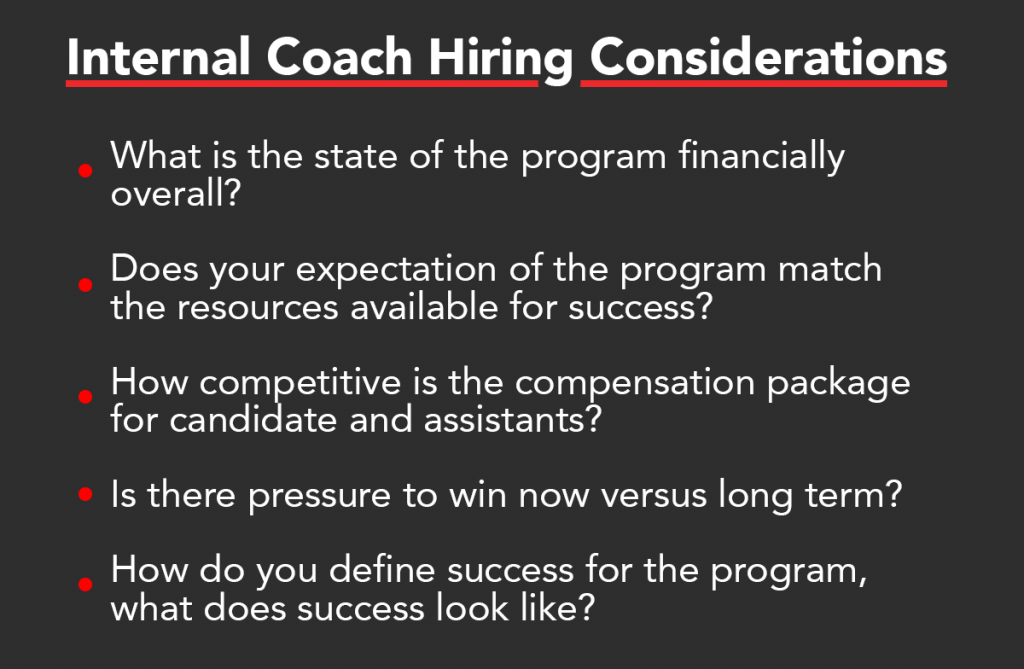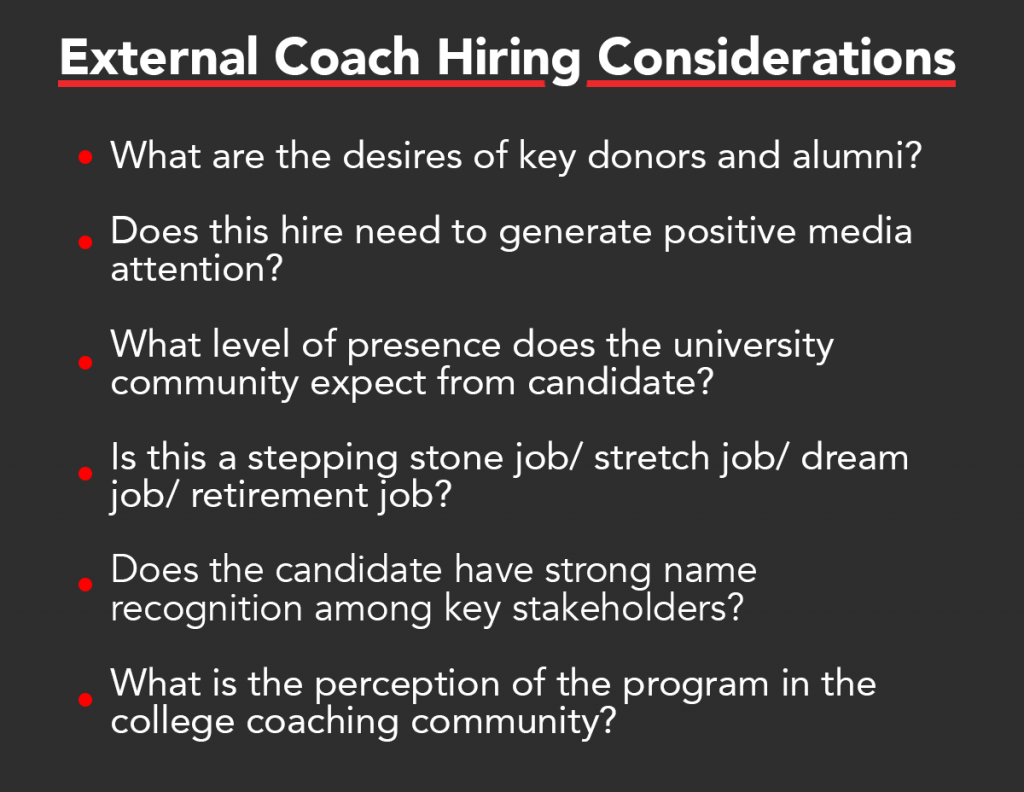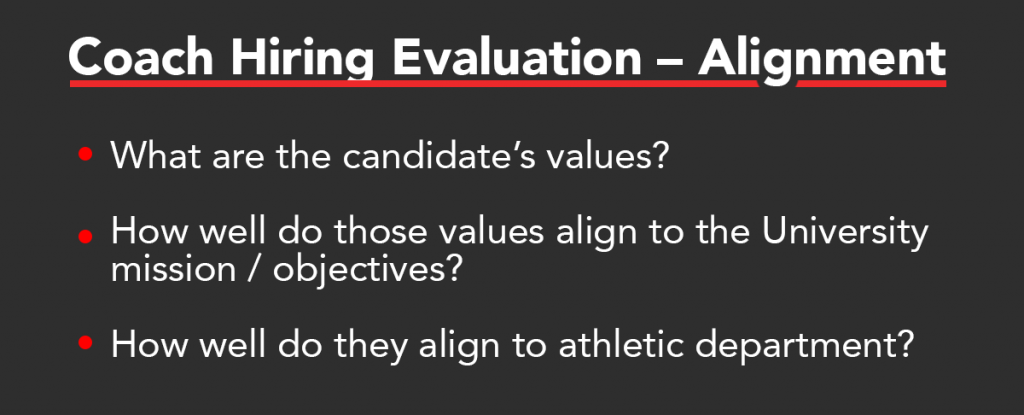With the advent of resources like 24/7 Sports, Rivals and a slew of other tools, the evaluation and recruiting of student-athletes has become a lot more standardized and predictable in recent years. Your coaching staffs know who they want, what type of player your program can attract and what strengths players have fit well into the game strategy. Analytics has overtaken sports in so many ways there are now predictive metrics coaches can rely on to hedge their bets and ensure they build the right team.
On this site, we have talked about Measuring a Winning Culture to create the right environment for your employees to thrive. It is very true that if you put a good person in a bad system, the system will win every time. This is why taking Michael Alford’s advice to establish and manage to key performance indicators (KPIs) is critical in executing your strategy. But what are you doing to ensure you have the right people in place to start?
We all know the risk of turnover. Society for Human Resource Management research estimates average turnover costs an organization over 20% of salary. What does it cost your organization to recruit and hire an open role?
This is where science can help! Yes, there is a science for predicting human performance within the workplace the same way as your coaches use analytics to predict on-field behavior. Call it what you will, the opportunity exists to create an optimized workforce off the field to drive success on it.
Here are three easy ways you can increase your team-building success within your own departments and programs:
Know Your Environment
You would not send a coach out to recruit a quarterback if they did not understand the type of offense they would be running. Understanding the parameters in which you anticipate the individual to perform is paramount in the recruitment and selection.
Here is where you are focused less on what tasks are on an individual’s job description and more targeted on the behaviors and resources a person needs in order to be successful within your department.
Tough realizations might set in that an individual you worked with at a previous school is not a good fit to join at your new organization. Moving from a big school to a smaller university may mean different resources you are able to provide your team to operate. Going to a larger institution may add a layer of politics your team needs to recognize if they are going to be successful in executing your strategy.
Narrowing all of these competencies into a list of the five or six areas your current organization is different than other places will help to identify what good looks like. Once you have identified these parameters, you have a starting point.


Set the Standard
Think what you will of the NFL Combine and the validity it has on predicting the perfect professional football player. One reason this exercise is so effective is the standardization it provides teams comparing players. An NFL team is provided the data on every wide-receiver’s speed, bench press, vertical jump and agility. This apples to apples comparison might not provide all of the data to make a decision, but it does allow to show differentiation.
Differentiation is key in the hiring process. At the end of the day, you need to know who the best candidate in a pool of options is. Which person is the best fit for your organization based on the parameters and competencies you established as being critical for your organization.
It is important to put each candidate through the same, structured process. The unstructured interview processes we are all familiar with – “Hey! So why don’t you walk me through your resume…”- has shown to be just as predictive in job performance as flipping a coin.
Put together an interview guide to be used for every candidate. Zero in on the areas you identified as being unique to your institution and ask behavioral questions to see how candidates have grappled with similar situations in the past. By asking every candidate the same questions, you are able to rate all of them on the same criteria.
There are plenty of other tools and methodologies to be used in bolstering this process. Personality and cognitive ability assessments provide a little more data into the preferences and potential of an individual. Exercises such as case studies and role plays allow for you to see a candidate’s style in execution.
For example, it is important for candidates to identify examples where they have been successful, and for them to be able to walk you through the process (controllables and uncontrollables) that led to those achievements. Do they credit other “things” outside of their specific abilities and skillset? Here you will learn what they feel they need to be successful and allow you to determine whether it is something your institution can provide.


Paint the Picture
As you do not want your coaches, sitting in the living room of your future players and promising them playing time or a style of offense they know is unrealistic, you too should focus on setting realistic expectations up front.
The on-boarding or socialization process of an employee actually starts before they ever sign their offer letter. Providing a realistic job preview where you highlight your expectations, and the parameters identified above, will start your new employees off on the same page – ready to hit the ground running.
When you are sitting across the table from a blue-chip prospect, it is hard not to sell them hard and try to say everything they want to hear. Doing so just harbors resentment and a disdain for your institution. A simple realistic job preview and setting expectations early has shown to increase the employee’s speed to proficiency, reduce turnover and increase employee performance.
The importance of being transparent about the situation and the job at hand cannot be understated. This means transparency about the current/future (or lack of) resources available, and truthfully articulating the vision based on these variables. Set the tone of how your working relationship would look if they were to get the job – start out like you can hold out.

Overall, building the right team to lead your program to excellence is a lot easier than it might seem. Being as purposeful and methodical in your hiring as you are in execution will lead to an engaged workforce – ready to do whatever it takes to win.
Chasse Conque is in his fourth year as Vice Chancellor and Director of Athletics at the University of Little Rock Arkansas. Marc Prine, PHD is an Industrial / Organizational Psychologist and founder of MIP Consulting, LLC.


